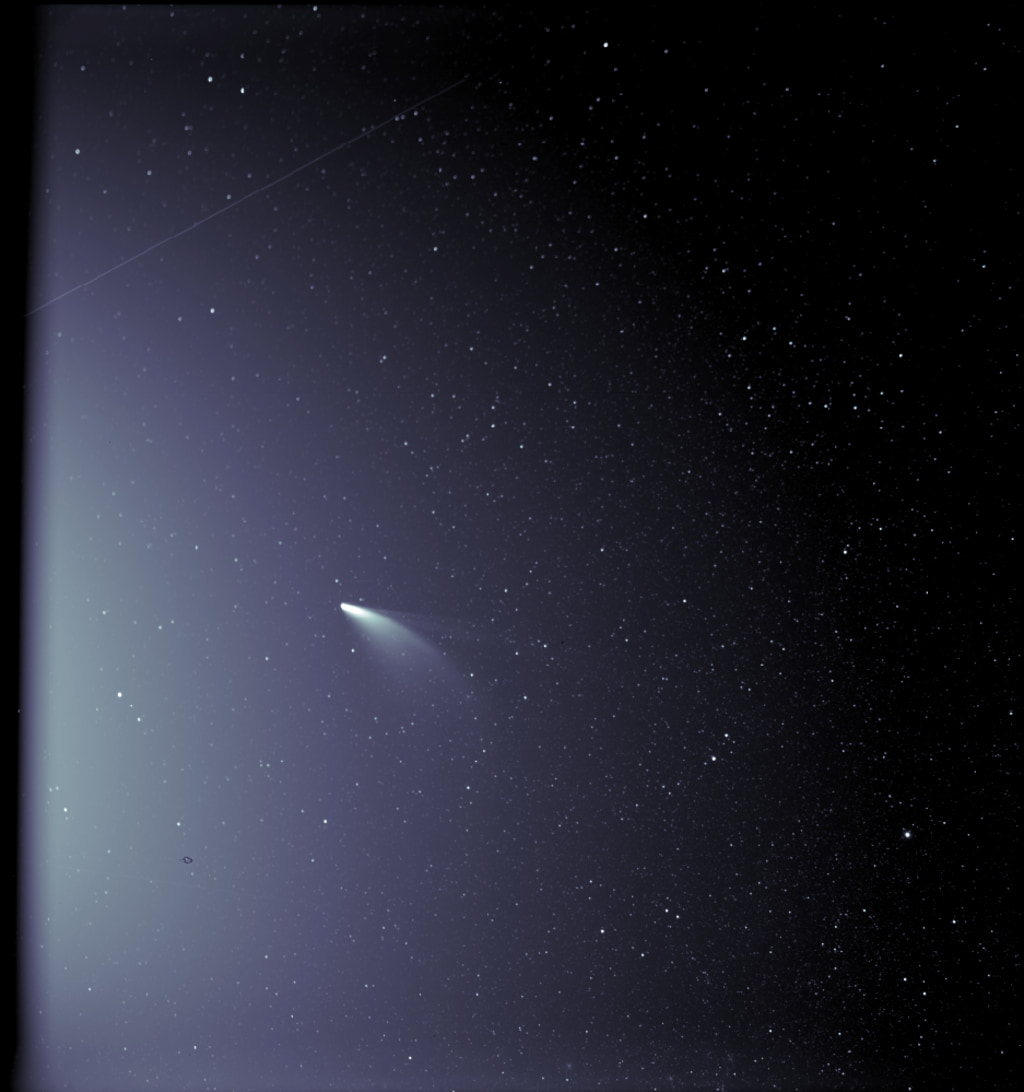NASA's Planet-Hunting TESS Catches a Comet Before Starting Science
This video is compiled from a series of images taken on July 25 by the Transiting Exoplanet Survey Satellite. The angular extent of the widest field of view is six degrees. Visible in the images are the comet C/2018 N1, asteroids, variable stars, asteroids and reflected light from Mars. TESS is expected to find thousands of planets around other nearby stars.
Credit: Massachusetts Institute of Technology/NASA’s Goddard Space Flight Center
Watch this video on the NASA Goddard YouTube channel.
Complete transcript available.
Before NASA’s Transiting Exoplanet Survey Satellite (TESS) started science operations on July 25, 2018, the planet hunter sent back a stunning sequence of serendipitous images showing the motion of a comet. Taken over the course of 17 hours on July 25, these TESS images helped demonstrate the satellite’s ability to collect a prolonged set of stable periodic images covering a broad region of the sky — all critical factors in finding transiting planets orbiting nearby stars.
Over the course of these tests, TESS took images of C/2018 N1, a comet discovered by NASA’s Near-Earth Object Wide-field Infrared Survey Explorer (NEOWISE) satellite on June 29. The comet, located about 29 million miles (48 million kilometers) from Earth in the southern constellation Piscis Austrinus, is seen to move across the frame from right to left as it orbits the Sun. The comet’s tail, which consists of gases carried away from the comet by an outflow from the Sun called the solar wind, extends to the top of the frame and gradually pivots as the comet glides across the field of view.
In addition to the comet, the images reveal a treasure trove of other astronomical activity. The stars appear to shift between white and black as a result of image processing. The shift also highlights variable stars — which change brightness either as a result of pulsation, rapid rotation, or by eclipsing binary neighbors. Asteroids in our solar system appear as small white dots moving across the field of view. Towards the end of the video, one can see a faint broad arc of light moving across the middle section of the frame from left to right. This is stray light from Mars, which is located outside the frame. The images were taken when Mars was at its brightest near opposition, or its closest distance, to Earth.
These images were taken during a short period near the end of the mission’s commissioning phase, prior to the start of science operations. The movie presents just a small fraction of TESS’s active field of view. The team continues to fine-tune the spacecraft’s performance as it searches for distant worlds.
TESS is a NASA Astrophysics Explorer mission led and operated by MIT in Cambridge, Massachusetts, and managed by NASA’s Goddard Space Flight Center in Greenbelt, Maryland. Dr. George Ricker of MIT’s Kavli Institute for Astrophysics and Space Research serves as principal investigator for the mission. Additional partners include Northrop Grumman, based in Falls Church, Virginia; NASA’s Ames Research Center in California’s Silicon Valley; the Harvard-Smithsonian Center for Astrophysics in Cambridge, Massachusetts; MIT’s Lincoln Laboratory in Lexington, Massachusetts; and the Space Telescope Science Institute in Baltimore. More than a dozen universities, research institutes and observatories worldwide are participants in the mission.

Animated gif of the unlabled comet sequence.
Credit: Massachusetts Institute of Technology/NASA’s Goddard Space Flight Center
Unlabeled video of the TESS comet sequence.
Credit: Massachusetts Institute of Technology/NASA’s Goddard Space Flight Center
For More Information
Credits
Please give credit for this item to:
Massachusetts Institute of Technology/NASA’s Goddard Space Flight Center
-
Producer
- Scott Wiessinger (USRA)
-
Technical support
- Aaron E. Lepsch (ADNET Systems, Inc.)
-
Public affairs officer
- Claire Saravia (NASA/GSFC)
-
Science writer
- Jeanette Kazmierczak (University of Maryland College Park)
-
Scientist
- Padi Boyd (NASA/GSFC)
Missions
This page is related to the following missions:Series
This page can be found in the following series:Release date
This page was originally published on Monday, August 6, 2018.
This page was last updated on Wednesday, May 3, 2023 at 1:46 PM EDT.
